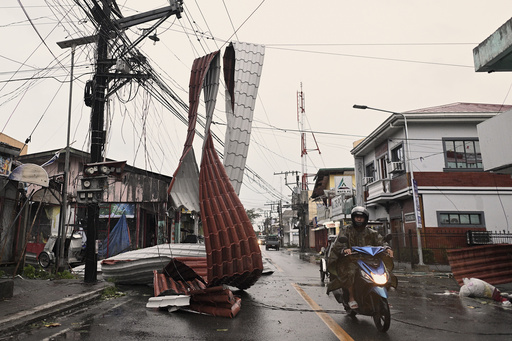
TAIPEI, Taiwan — Ferry operations have been suspended in various parts of coastal southern China as a significant storm makes its way into the South China Sea, bringing with it strong winds and heavy swells to the region.
On Wednesday, the storm was downgraded from its status as Typhoon Man-yi. This storm had already claimed seven lives in the Philippines and exacerbated the ongoing crisis following a series of storms that have severely impacted the disaster-prone country.
Currently, the system is identified as a low-pressure area located to the south of Hainan Island in China. According to reports from the Hong Kong Observatory, the system features maximum sustained winds of approximately 40 kilometers (25 miles) per hour, which is relatively moderate.
Experts in climate science have suggested that storms of this nature are likely to occur more frequently. However, enhanced preparedness measures and improved early warning systems across Asia-Pacific nations have contributed to lessening the severity of some of the more catastrophic outcomes associated with such weather events.
The rise in sea temperatures, a result of climate change, is leading to increased moisture in the atmosphere and extending the typical end date of the typhoon season, which usually concludes in September. In recent weeks, Europe, especially Spain, as well as the southeastern United States, have also endured the impact of extreme storms.
